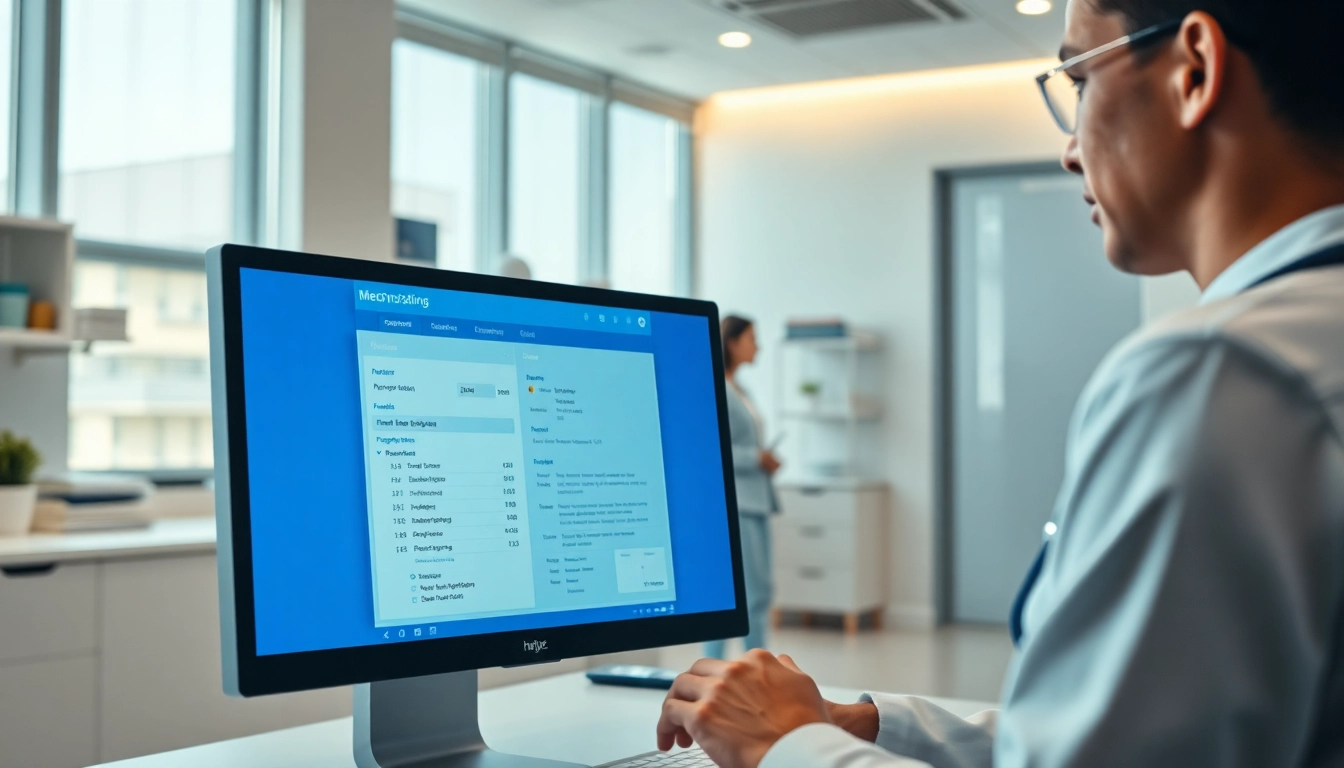Understanding Eprescribing Software
Eprescribing software has revolutionized the way healthcare providers manage prescriptions, improving the accuracy, efficiency, and safety of medication distribution processes. By enabling electronic communication between prescribers and pharmacies, eprescribing eliminates a significant number of human errors associated with traditional, paper-based methods. This article explores the features of eprescribing software, highlighting the tools available for healthcare professionals to enhance patient outcomes.
What is Eprescribing?
Eprescribing, or electronic prescribing, refers to the process of electronically generating and sending prescriptions from a healthcare provider to a pharmacy. This system provides a significant upgrade from traditional prescribing methods that often involve handwritten notes which can lead to misinterpretation, lost prescriptions, and other errors. Eprescribing software allows providers to send accurate, complete, and legible prescriptions directly to pharmacies, streamlining the medication delivery process and improving patient safety.
How Eprescribing Software Works
The functioning of eprescribing software is based on a few key components: a secure network infrastructure, an intuitive interface for prescribers, and integration with pharmacy systems. Once a prescription is generated, the software verifies patient data, checks for potential drug interactions, and cross-references medication history. The prescription is then securely transmitted to the chosen pharmacy, where it can be filled promptly. Providers can often see real-time updates regarding prescription status, enhancing communication within healthcare teams.
The Importance of Eprescribing in Modern Healthcare
In today’s healthcare landscape, efficiency and accuracy are paramount. Eprescribing is critical for improving clinical workflows, reducing prescription errors, and enhancing patient care. By enabling immediate access to medication histories and eliminating reliance on paper prescriptions, providers can make more informed decisions. Additionally, the integration of potential interaction checks helps to prevent adverse drug reactions, contributing to overall patient safety.
Key Features of Eprescribing Software
Understanding the key features of eprescribing software is essential for healthcare providers looking to improve their prescribing practices. Here are the most critical components:
Electronic Prescription Transmission
One of the primary features of eprescribing software is electronic transmission. This allows for the direct sending of prescriptions to pharmacies, which enhances accuracy and expedites the medication dispensing process. Additionally, the software maintains a digital record of prescriptions that can be easily accessed by both providers and pharmacists, ensuring a seamless medication management experience.
Medication History Access
Access to a patient’s medication history is a crucial feature of eprescribing software. This capability allows providers to view previous prescriptions, helping them make more educated decisions regarding current medications. Having this information at their fingertips enables providers to identify potential prescription duplications, verify adherence, and assess therapies that may not be effective, thereby optimizing patient care and outcomes.
Drug Interaction Alerts
Another vital feature is the drug interaction alert system. Eprescribing software evaluates new prescriptions against existing medications to flag potential interactions that could pose risks to patients. This real-time decision support minimizes the likelihood of adverse drug events and enhances patient safety by allowing providers to make timely interventions when necessary.
Benefits of Using Eprescribing Software
Implementing eprescribing software brings a multitude of benefits for healthcare providers, patients, and the overall healthcare system:
Improved Patient Safety and Compliance
By reducing prescription errors, eprescribing software significantly enhances patient safety. Studies have shown that electronic prescriptions are less prone to errors compared to handwritten prescriptions. Additionally, features such as medication history access and drug interaction alerts empower providers to prescribe more effectively, improving compliance and ensuring that patients receive the correct medications on time.
Streamlined Workflow for Healthcare Providers
Eprescribing streamlines clinical workflows by reducing the time spent on paperwork and prescription renewals. Instead of dealing with phone calls and faxes, healthcare providers can manage prescriptions directly within their electronic health record systems. This optimization allows them to devote more time to patient care and less time to administrative tasks, boosting productivity across the board.
Cost-Effectiveness for Practices
By implementing eprescribing software, healthcare practices can often reduce overhead costs associated with paper handling, storage, and manual record-keeping. Additionally, the efficiency gained through streamlined workflows helps to reduce staffing costs and minimizes costly errors that could lead to malpractice claims. The automation of the prescription process ultimately leads to enhanced revenue cycles and improved financial performance.
Challenges in Implementing Eprescribing Software
While the advantages of eprescribing software are substantial, healthcare organizations may face certain challenges during implementation. Identifying these potential obstacles can help practices prepare for a successful transition:
Technical Barriers and Integration Issues
Technical barriers can arise when integrating eprescribing software with existing electronic health record (EHR) systems. Compatibility issues may hinder data sharing, causing delays in implementation. To address these concerns, healthcare providers should undertake thorough assessments of their current systems, ensuring that any new software selected is compatible with established technologies. Engaging in comprehensive testing prior to full-scale implementation can help mitigate these risks.
Training and Support for Staff
Another significant challenge is ensuring that all staff receive adequate training to utilize the new eprescribing software effectively. Without proper training, the efficiency gains associated with the system may not be fully realized. Practices should consider investing in robust training programs and ongoing support to ensure all users are comfortable and proficient with the software. Regular workshops and refresher courses can also assist in maintaining competency among staff.
Addressing Patient Privacy Concerns
With the shift toward digital systems in healthcare, patient privacy concerns have also increased. Eprescribing software must comply with stringent regulations governing patient data protection. Healthcare providers should ensure that the software they implement adheres to HIPAA regulations and incorporates robust security measures to protect sensitive information. Educating patients about the steps being taken to secure their information can also help build trust in digital prescribing practices.
Future Trends in Eprescribing Software
As technology continues to evolve, the future of eprescribing software looks promising. Several trends are emerging that will shape the next generation of these systems:
Integration with Other Healthcare Systems
The future of eprescribing is closely tied to its integration with other healthcare systems, including EHRs, patient management tools, and telemedicine platforms. Enhanced interoperability will enable seamless data exchange, allowing for improved coordination of care and more comprehensive patient profiles. This holistic view of patient health data will empower providers to make better-informed prescribing decisions.
Enhancements in User Experience
User experience is critical in encouraging the adoption of eprescribing software. Future developments are likely to focus on creating more user-friendly interfaces that simplify navigation and reduce the learning curve for clinicians. Features such as voice recognition, mobile accessibility, and customizable dashboards will increase efficiency and improve user satisfaction.
Regulatory Changes Impacting Eprescribing
Ongoing regulatory changes in healthcare will continue to impact eprescribing practices. Government initiatives promoting digital health and the adoption of electronic prescribing standards may shape how software is developed. Staying ahead of these regulations will be crucial for healthcare providers as they aim to remain compliant and continue to leverage digital tools in prescribing.






